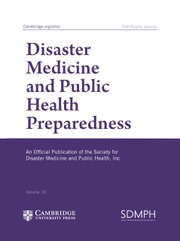No CrossRef data available.
Article contents
Turn Around, Don’t Drown: A Systematic Review of Risk Factors for Motor Vehicle–Related Drowning in Floods and its Preventive Strategies
Published online by Cambridge University Press: 18 September 2024
Abstract
Exposure to flood, one of the most widespread disasters caused by natural hazards, increases the risk of drowning. Driving through flooded waterways is a cause of death due to flood-related drowning, especially in flood-prone areas. This study aimed at identifying the risk factors for motor vehicle–related drowning in floods and its prevention strategies.
International and national databases (WOS, PubMed, Scopus, Google Scholar, Magiran, and SID) were searched in the time span from 2000 to 2022. The studies investigating the risk factors relevant to land motor vehicle–related drowning in floods and its prevention strategies were included and analyzed using thematic content analysis.
In 14 eligible studies, risk factors for land motor vehicle–related drowning in floods were identified and categorized in 3 subthemes: driver (3 categories: socio-demographic characteristics, knowledge and attitude, and beliefs); technology (1 category: land motor vehicles); and environment (2 categories: physical and socio-economic environment). Physical and structural measures (1 category: road safety improvement) and nonstructural measures (4 categories: research and education and raising awareness, risk management, promoting social-cognitive beliefs, and reconstruction and improvement of legal infrastructure) were proposed as drowning prevention strategies.
The knowledge, attitude, and belief of the driver; the vehicle; and the environment were the most important risk factors of driving through flooded waterways. These factors should be considered when designing programs and physical and structural strategies for future interventions to curb this dangerous and potentially fatal driving behavior.
- Type
- Original Research
- Information
- Copyright
- © The Author(s), 2024. Published by Cambridge University Press on behalf of Society for Disaster Medicine and Public Health, Inc


